In South Indian weddings, the Pelli Poola Jada—a floral braid—adds elegance and symbolism to the bride’s look. As more brides become eco-conscious, they are opting for sustainable, locally sourced flowers to reduce environmental impact while still honoring tradition.
In this article, we’ll explore ten beautiful eco-friendly flower options for creating a stunning and sustainable Pelli Poola Jada. From classic jasmine to vibrant hibiscus, these flowers are perfect for a bridal look that respects both culture and the planet.
Top 10 Eco-Friendly Flower Choices for Pelli Poola Jada
1. Jasmine
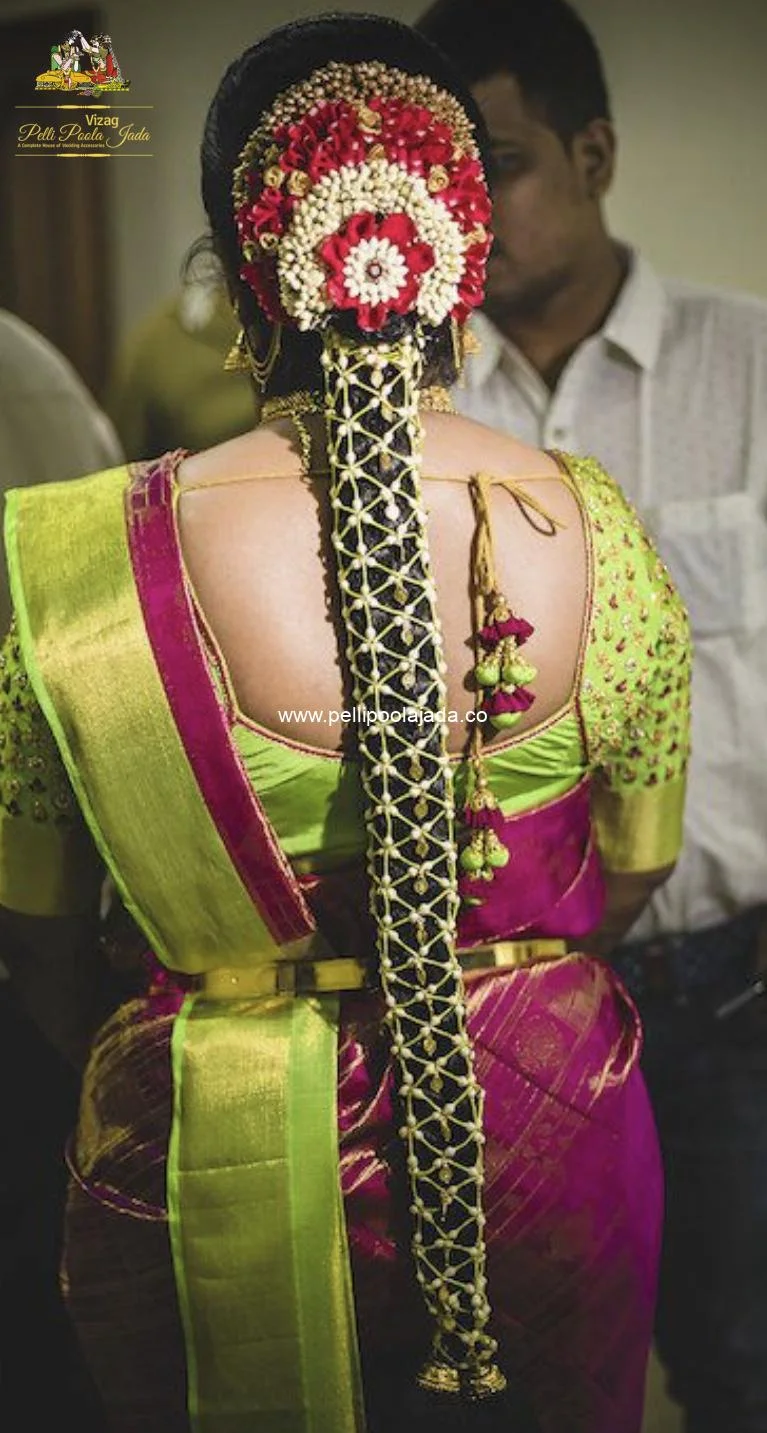
Jasmine is the flower typically used in South Indian weddings, symbolizing purity, has white fragile petals, and produces a sweet fragrance. Jasmine represents purity and good fortune thus becomes an essential part of bridal hairstyle, hair accessories in the form of floral extension bands. Jasmine is also an environmentally pleasant option because the material is readily available and generally grown non-impact on the environment. There is no lack of flowers in warm regions and so what’s produced can suffice without the need for large scale cultivation. Brides choose jasmine because it embodies cultural meaning, compliments the archetypal bridal appearance, and operates from an environmentally responsible position.
2. Rose

Red and white roses are recognized as classic signs of love and purity among all flowers in the world. They are very culturally and emotionally attached in weddings. Most people prefer natural roses which have no synthetic chemical pesticides and fertilizers used in growth and nurturing of these flowers. When combined with natural materials like mango leaves, they produce a colorful but environmentally friendly Pelli Poola Jada. While, red roses depicting love at its best emotionally charged, white roses symbolizing the purity of the love shared between two souls. This spectacular flower is equally beneficial and has the extra virtue of being eco-friendly when grown in bio-friendly farms.
3. Marigold
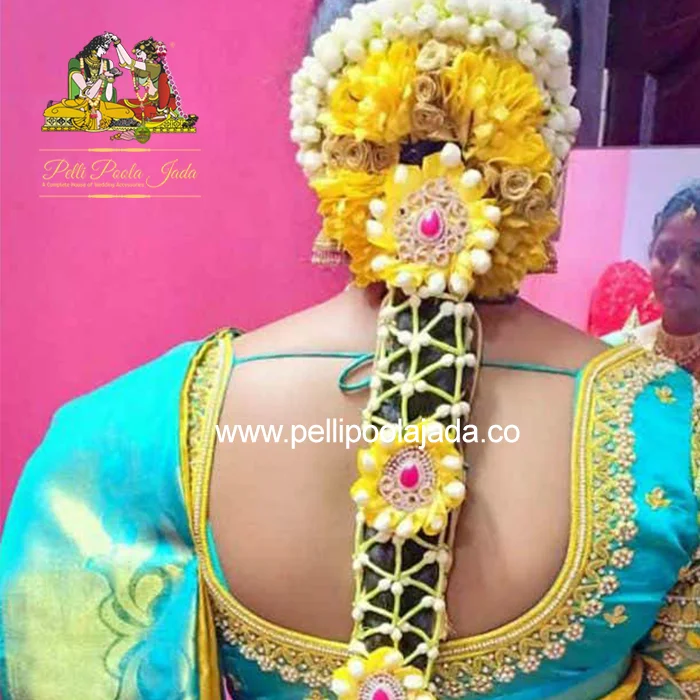
Marigolds signify wealth, fertility, divinity, and good luck; thus they are ideal for use in bridal accessories. They are not difficult to cultivate, and their watering needs are shallow, and they can do well especially when grown in hot environments, thus an ecologist wedding flower. Thus, either with or without their husbands, brides can nurture marigolds in pots from seeds not grown using chemical fertilizers for their bold and cheerful color. If incorporated in a Poola Jada, the flower marigold blesses a traditional look without compromising environmental conservation.
4. Orchids

Some brides who choose orchids seem to understand that the flowers do not wilt quickly and may not require other flowers to supplement them during the wedding. Also, their methods of production are increasingly environmentally friendly; most suppliers apply sustainable production methods. One important aspect of the sustainability of the flowers is that they can be grown without using a lot of water and energy to grow, hence recommending that one considers using orchids as bridal bouquets. From purples to whites with vivid flair, the orchids bring the Pelli Poola Jada into the twenty first century, yet maintaining its ecological consciousness.
Suggested Read👇🏻
- Tips to Plan Your Destination Wedding
- Unique Pelli Poola Jada Designs Made with Sustainable Materials
5. Lavender
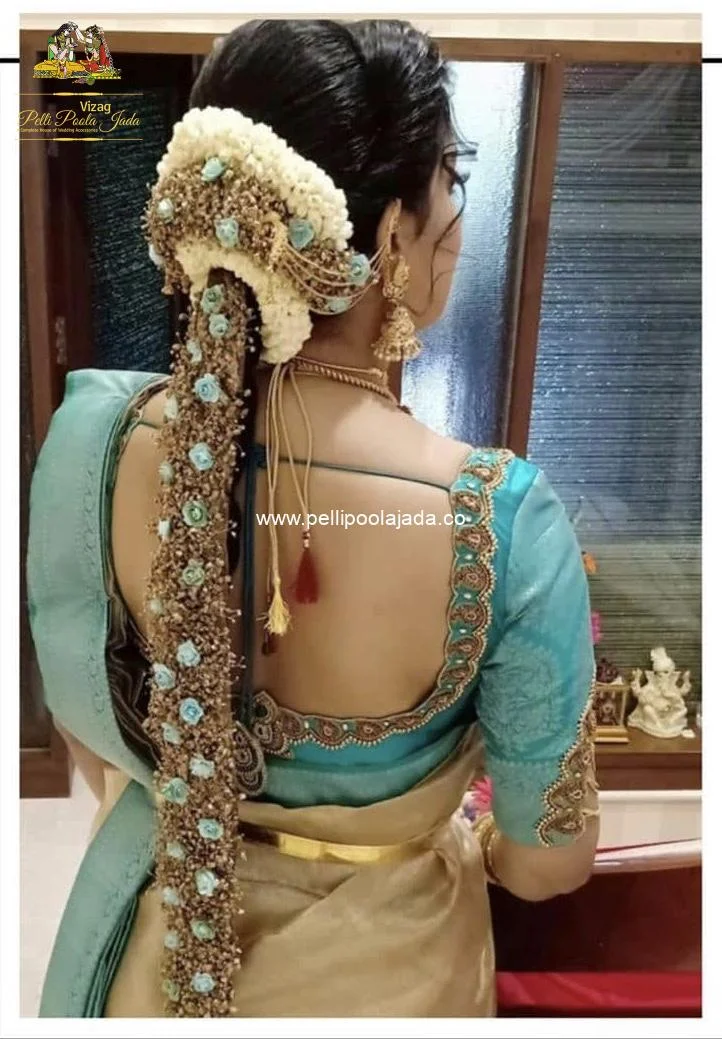
The lovely purple blossoms and relaxing scent of lavender make it a popular flower. It is a suitable option for bridal adornments since it symbolizes dedication, elegance, and peace. Because it grows readily in most areas with little water or fertilizer, lavender is a sustainable choice. It is a useful and environmentally responsible addition to any Pelli Poola Jada because of its hardiness and persistent blooms. Additionally, the aroma of lavender adds to the ambiance, fostering a calm setting during the ceremony.
6. Holy Basil
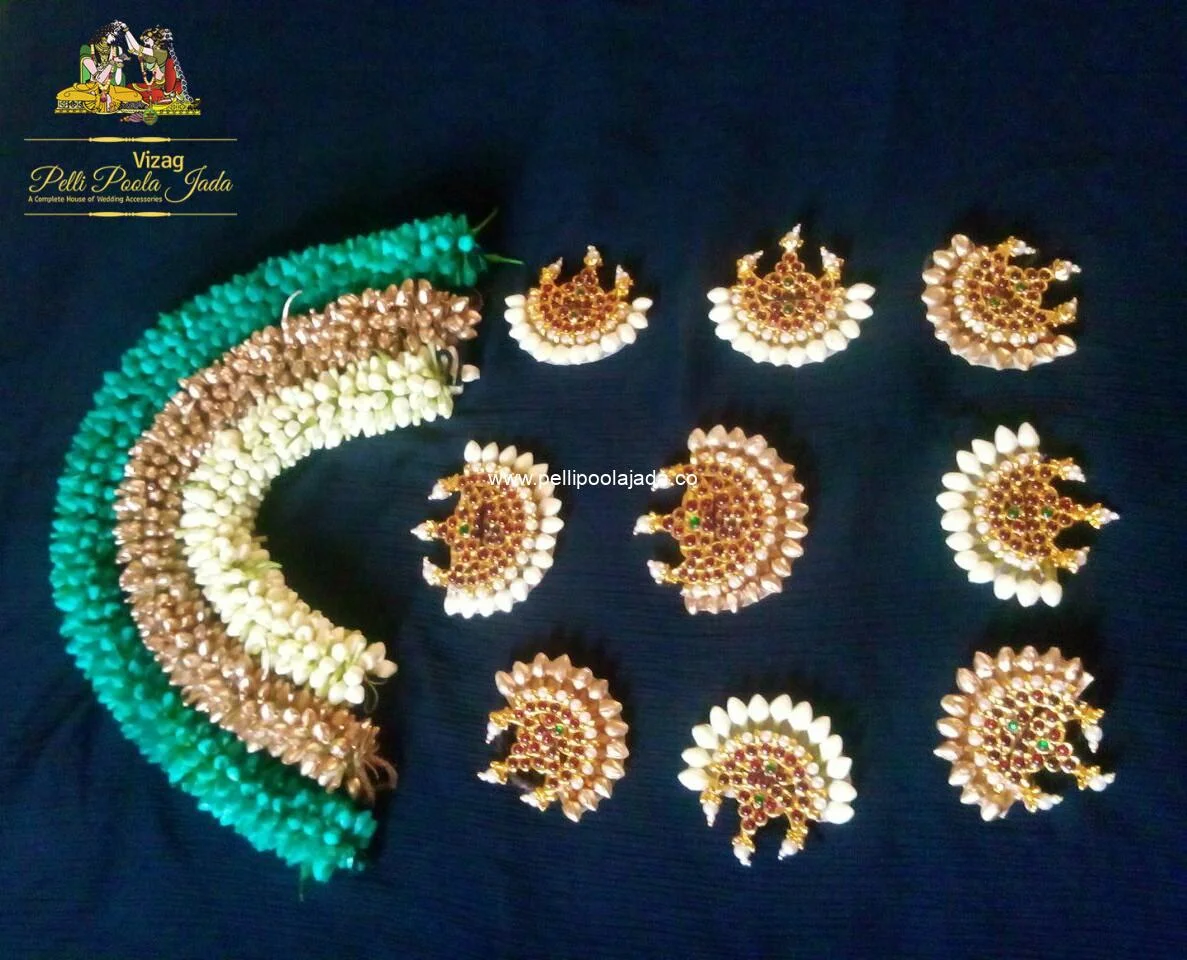
Tulsi is regarded as holy in Indian tradition and is believed to bring good health, sanctity and religiousness. Incorporation of tulsi leaves into the Pelli Poola Jada makes complete sense plus the cultural and environmental significance of the plant is excellent. Tulsi is usually planted in most homes in the garden and therefore can be obtained fresh and locally hence cutting on the measures of transportation involved in the process. Tulsi leaves complement well when added to flowers such as jasmine or roses – not only do the flowers add beauty to the Pelli Poola Jada but also carries a spiritual touch.
7. Lotus

The lotus flower is of great religious and cultural importance in India as it represents purity, beauty, and spiritual awakening. Its petals, which is often used in religious occasions, is the right material for the Poola Jada. Despite its fragility, it is gathered from organic sources such as ponds and wetlands; thus, it can be considered an option for green weddings. Lotus flowers add some heavenly feel to the bride’s image and are perfect for brides-to-be, who crave spiritual energy.
8. Hibiscus
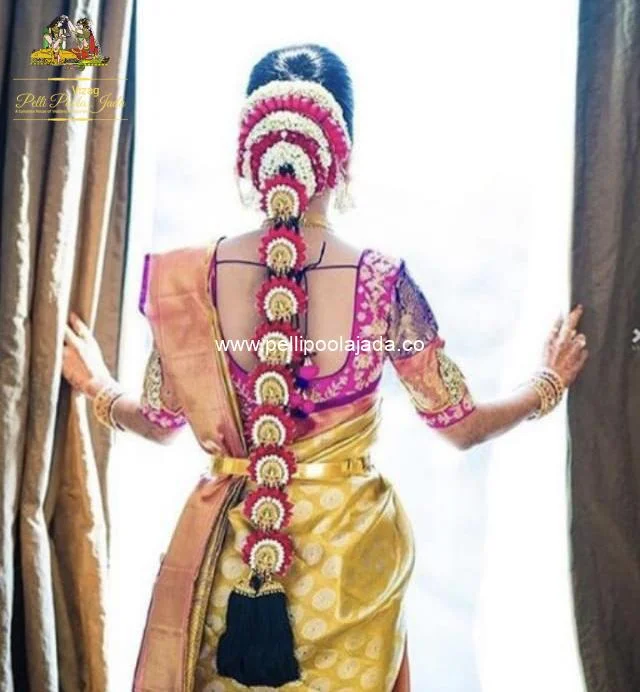
The enormous, colorful blooms of hibiscus give the Pelli Poola Jada a striking, tropical appearance. Known for their eye-catching red, yellow, and pink hues, hibiscus is a sustainable choice because it requires little maintenance and thrives well in warm regions. To keep their flower selections environmentally friendly, brides can choose hibiscus that is grown organically. Modern brides love the flower’s inherent beauty because it gives the classic braid a striking, vibrant statement.
9. Chrysanthemums
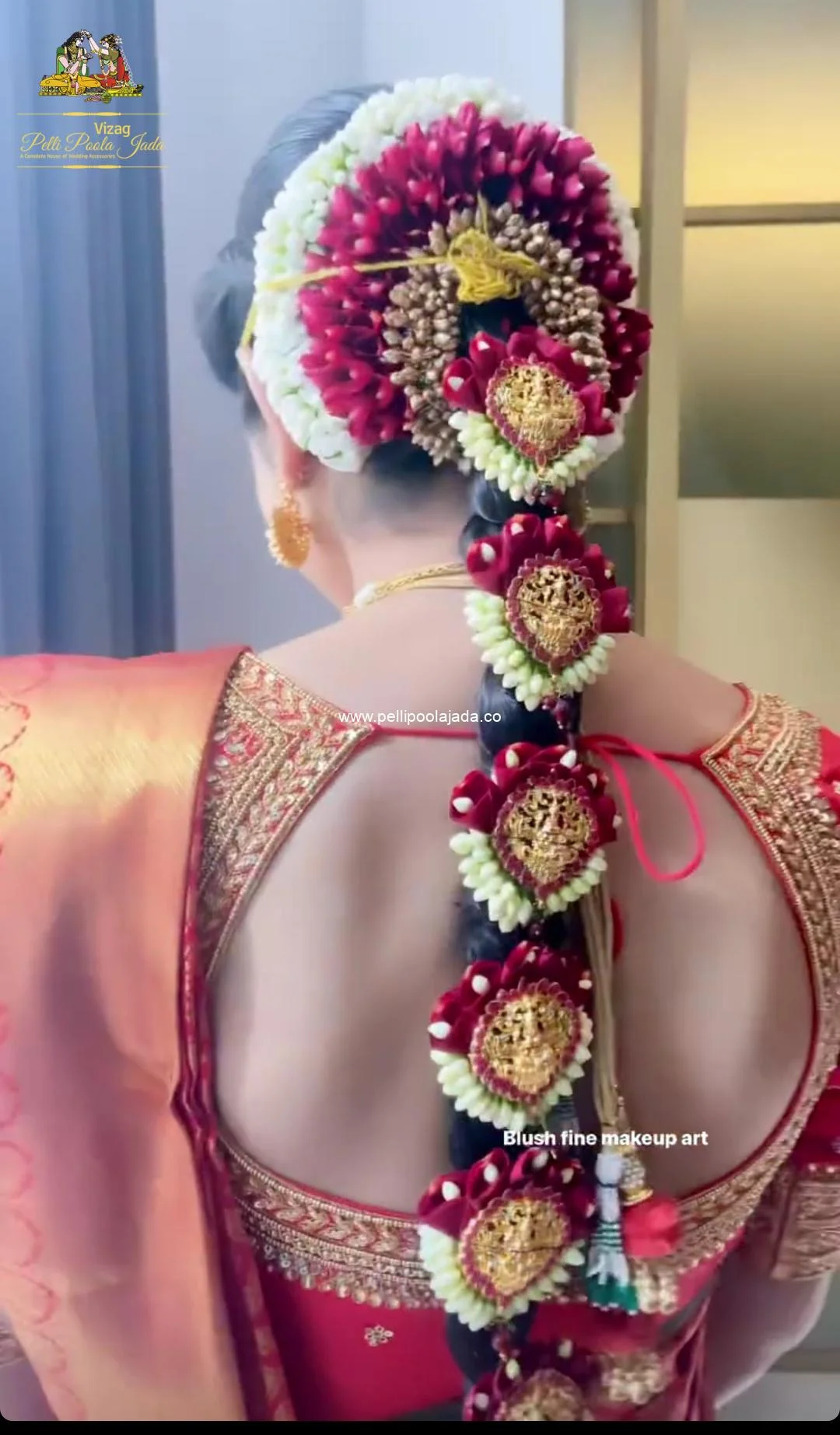
Different types and an enormous number of colors have made chrysanthemums suitable for use throughout the wedding ceremony of Indian origin. Many of these flowers are sourced from within the region and therefore the issue of transport as a cause of emission of greenhouse gasses is minimized. Brides prefer chrysanthemums due to the volume they offer and can then accompany them with jasmine or roses for an exquisite layered Poola Jada look. This makes them endure the wedding day and are still useful making them a perfect practical and even more sustainable option.
10. Daisy

Daisies, with their cheerful appearance and bright colors, offer a fresh and youthful look to the Poola Jada. They symbolize innocence and joy, aligning perfectly with the celebratory nature of weddings. Daisies are easy to grow in various climates, making them a sustainable choice for eco-conscious brides. Their simplicity and charm are well-suited for brides looking for an understated yet meaningful floral braid.
Conclusion
In conclusion, Eco-Friendly Flower Choices for Pelli Poola Jada ensures that the bride honors both tradition and the environment. By opting for sustainably grown, organic, and locally sourced flowers, brides can contribute to reducing waste, minimizing their carbon footprint, and supporting ethical farming practices.
From jasmine to hibiscus, each flower carries its own cultural significance while promoting sustainability. With the right floral choices, brides can create a stunning Poola Jada that not only enhances their beauty but also reflects their commitment to protecting the environment.
FAQ
Which flowers last the longest in a Pelli Poola Jada?
Flowers like jasmine, orchids, marigolds, and roses tend to last longer in a Pelli Poola Jada. These flowers are known for their durability and can withstand the day’s events without wilting quickly, making them popular choices for bridal hair adornments.
How do I keep my Pelli Poola Jada flowers fresh throughout the day?
To keep the flowers fresh, store them in a cool place before use and spray them lightly with water. You can also ask your florist to use a light mist of water-based floral preservative. Some brides opt to refrigerate the floral braid until it’s time to wear it, ensuring the flowers stay vibrant during the wedding ceremony.
Can I mix different types of eco-friendly flowers in my Pelli Poola Jada?
Yes, mixing flowers like jasmine, roses, and marigolds with tulsi leaves or other greenery can create a beautiful, layered look. Combining flowers of different sizes and colors adds texture and visual interest to the braid while keeping it eco-friendly.

